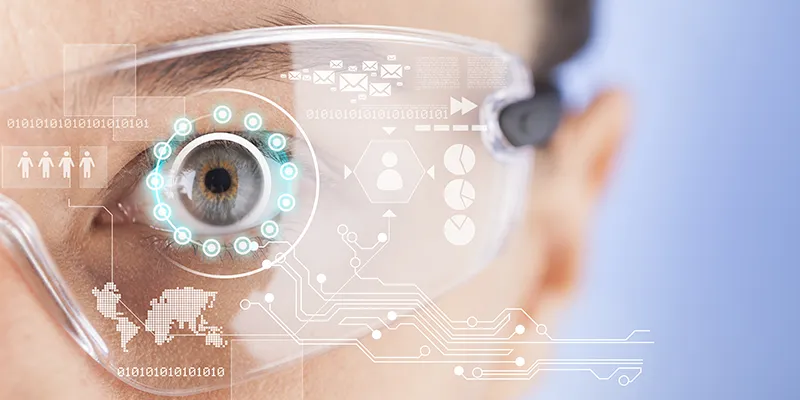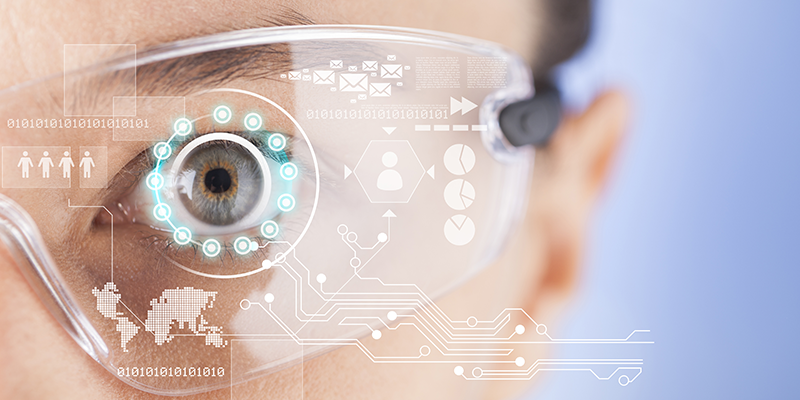8 drivers that will shape the future of virtual/augmented reality
Since Google launched Google Glass in 2013 and Facebook acquired Oculus Rift for $2 billion in 2014, virtual reality and augmented reality have received tremendous global attention. The future of augmented reality looked even more exciting when Microsoft unveiled HoloLens, based on a concept called mixed reality. The VR and AR industry has attracted an investment of about $4 billion, with over half of that investment in just the last two years. Everyone from Facebook to Sony to Nokia is trying to get a slice of the VR pie.

Image : shutterstock
At the same time, the future growth of VR and AR is hardly guaranteed.. Gartner’s Hype Cycle for Emerging Technologies 2015 report has shown the augmented reality and virtual reality sectors to be in the Trough of Disillusionment stage. This is the stage in which market expectations begin to fall sharply because of unpromising experiment results or the failure of commercialisation efforts. Virtual reality first appeared on Gartner's Hype Cycle in 2013, at the bottom of the curve and over the course of two years it has moved along the curve to a position right on the cusp of the Slope of Enlightenment, a stage in which the reputation of the technology rises again. On the other hand, augmented reality first appeared on Gartner's Hype Cycle back in 2005 and today it is plunging down into the Trough of Disillusionment. However, Gartner expects both AR and VR to make the quantum leap to the Plateau of Productivity, the beginning of mainstream adoption, in the next five to 10 yrs.
Though the uses of AR and VR are different, they share some common drivers that could shape the future of technologically-enhanced reality.
- Purpose: In the past, we have seen numerous technologies arousing lots of excitement and hype, and then vanishing completely. These technologies failed to break into the mainstream because the companies kept their focus on the technology, and not on the benefit or the value proposition for the user. Google Glass is a fine example of this. They tried selling the basic functions of Google Glass, quickly capturing images and obtaining useful information from the internet a glance away. What they didn't do was, show the user the most practical daily uses of these features/functions. To a great extent, Microsoft is trying to avoid that mistake by projecting HoloLens as a gadget that can be used for particular tasks, rather than just listing its features without highlighting the relevance for customers.
- Affordability: AR and VR devices currently come with a hefty price tag. It could potentially be argued that in the future, with advanced manufacturing processes and economies of scale, the cost could come down, but for that to happen VR has to get into the mainstream soon. Immersive VR needs a PC with high-end graphics and plenty of computing power, which is an added cost, to best experience the technology. More than the experience, the added cost must justify the utility. Screenless VR technology such as Samsung Gear or Google cardboard could keep the excitement around VR alive for some more time.
- Content: The high prices commanded by VR and AR technologies will only be acceptable if the devices come with engaging content. Both AR and VR platforms will require varied and rich content to justify the cost incurred to experience them. The content creators would create the content only if there is a significant user base and the users will only adopt the technology if there is a variety of content to consume. Along with the variety in content, quality content is also important. The vision and immersion experience would be the key drivers for content consumption. If the users see individual pixels or get eye strain and experience poor object stability or audio quality, they wouldn't adopt the technology. Facebook, Google, and the others in the game would need to play a crucial role here. They would need to nurture the VR and AR content creators because at the end, only content will fuel the growth of VR and AR platforms. It is also important that the content creator should not be biased towards a particular application of the technology and create content only for that.
- Accessibility: Immersive VR is a very resource intensive technology and requires a particular level for the Graphics Processing Unit (GPU), a hefty Central Processing Unit (CPU), and broad storage to run VR software. These technical requirements might limit the accessibility of the technology to many. Affordable screenless VR headsets like Google Cardboard and Samsung GearVR can continue to keep VR within reach for many but immersive VR will still face hurdles in mass adoption.
- Usability: AR has certain benefits over VR. It can be used anywhere as it doesn't block the users vision. Having said that, AR has certain drawbacks which discourage its adoption. AR devices are heavy and bulky with poor battery life and cannot be used without internet connectivity. On the other hand, Immersive VR which blocks out your vision can be enjoyed best in controlled environments such as the home where users won’t fall over. Immersive VR needs to remain tethered to your PC and hence restricts mobility. Screenless VRs offer mobility with partially immersive experience.
- Comfort: Hanging a brick in front of your face for hours is certainly not comfortable. No matter whether the brick is made of plastic or has a matte finish. Lately, many VR users have also complained of nauseating feelings and spatial discomfort after prolonged exposure to VR. Though AR tech is much more compact than VR gear, it is still large and sits heavy on your face. The great experience comes along with huge discomfort and health concerns.
- Aesthetics: One of the reasons why Google Glass failed was because it looked awkward and very unattractive. These days wearable technologies are an extension of your personality. They need to align with your style statement, not make you look like a cyborg. Just like clothes, design style and comfort will govern your decision to wear the technology or not. AR will have to counter greater challenges than VR because its usage is more on the streets. The size, weight, battery life and vision quality will drive the aesthetic design of AR gear.
- Safety and Health concerns: AR may not be inducing nausea after a few hours of usage, unlike Virtual Reality, but what happens when we use it for tens of thousands of hours. Will there be any health complications resulting from extended exposure to the radiation emitted from the device? In advanced AR or Mixed Reality, we are essentially fooling our body and mind into believing that the things we see in these advanced realities exist in the real world. This probably could induce some long-term effects of which we don't know yet.
Technologies have always created excitement and offered new and endless possibilities. But it has been proved that technology or features don't drive mass technology adoption, it is the value the technology creates for the user and the ease in adopting it that drives the adoption. Rather than offering numerous use cases, technology should demonstrate significant and unique potential for improving our lives, individually and collectively.
(Disclaimer: The views and opinions expressed in this article are those of the author and do not necessarily reflect the views of YourStory.)






